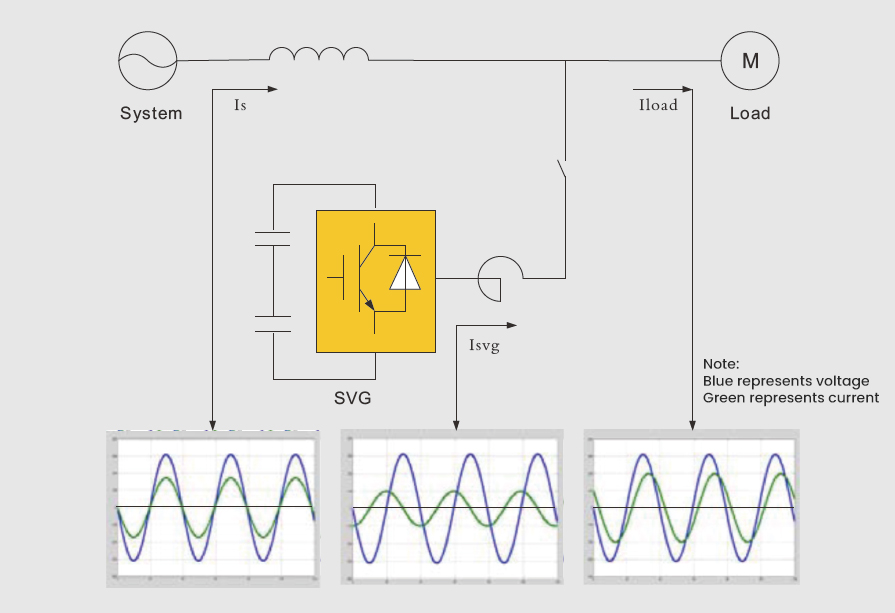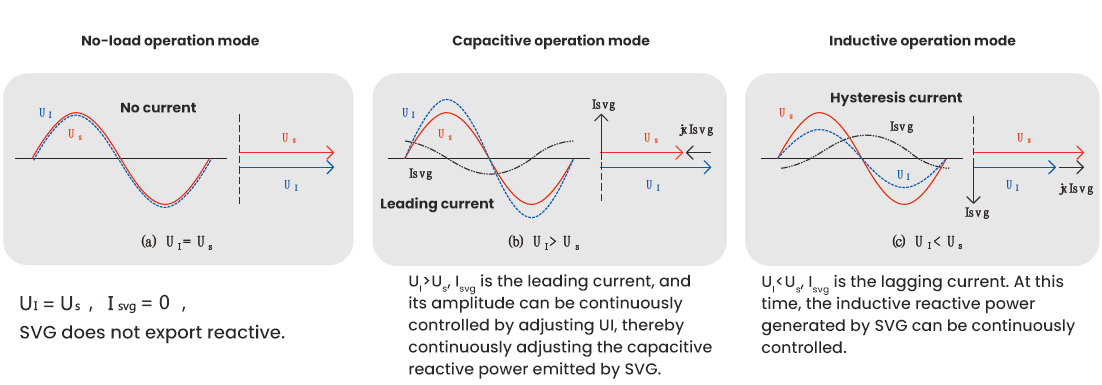Modular Structure: The Cornerstone of Flexible Expansion and Efficient Maintenance
The Static Var Generator (SVG) utilizes a modular building block design, supporting on-demand capacity and functionality expansion. Its core modules (such as the power unit and control unit) can be replaced independently, eliminating the need for complete system downtime for maintenance and significantly reducing maintenance costs. For example, in wind farm projects, by stacking power modules, the SVG capacity can be expanded from 5Mvar to 20Mvar, meeting the needs of various scenarios. The modular structure also simplifies installation, allowing users to choose between overhead busbar or bottom cable routing, adapting to space-constrained environments. Furthermore, fiber optic communication between modules provides strong anti-interference capabilities and ensures stable signal transmission, making it particularly suitable for industrial scenarios with complex electromagnetic environments.
High Reliability: Fully digital control and redundant design Dual Protection
SVG utilizes fully digital control technology, monitoring grid parameters (voltage, current, and harmonics) in real time to accurately calculate reactive power compensation requirements, avoiding the over- or under-compensation issues associated with traditional capacitor banks. Its control algorithm boasts a millisecond-level response speed, completing reactive power regulation within 5ms and effectively suppressing voltage fluctuations. For example, in arc furnace load scenarios, SVG can rapidly compensate for reactive power surges, reducing voltage fluctuations from ±15% to ±3%, ensuring stable equipment operation. Furthermore, SVG utilizes a redundant design with hot-swappable key components (such as IGBT power devices). A single module failure does not affect overall performance, resulting in system availability exceeding 99.9%.
Pollution-resistant Strong: Stable Operation in Harsh Environments
SVG's fully enclosed design isolates conductive components (such as capacitors and reactors) from the outside world, leaving only the cooling fan exposed. This effectively protects against contaminants such as dust, salt spray, and moisture. For example, in a coastal chemical park, SVG has operated continuously for three years in an environment with a salt spray concentration of up to 0.5 mg/m³ without experiencing any degradation in insulation performance. Furthermore, the SVG's IP54-rated enclosure protects against the ingress of solid foreign objects larger than 1.0 mm in diameter and is resistant to temperatures ranging from -40°C to +55°C. Its cooling system features an automatic dust-clearing function that removes dust from the filter screen through reverse purge, ensuring efficient heat dissipation and preventing performance degradation due to overheating.
Flexible Application Solutions: Customizable Capabilities for Multi-Scenario Adaptation
SVG supports hybrid networking with devices such as static VAR compensators (SVCs) and active power filters (APFs) to form a comprehensive reactive power compensation solution. For example, in a regional power grid, SVG can be used in conjunction with fixed capacitor banks, with the former providing dynamic compensation and the latter providing basic capacitive reactive power, reducing overall costs by 30%. For unbalanced three-phase loads, SVG can regulate reactive power by phase, eliminating negative sequence currents and reducing imbalance from 25% to within 5%. Furthermore, SVG supports seamless integration with renewable energy generation systems (such as wind power and photovoltaics), improving grid stability by rapidly responding to power fluctuations. For example, in a 100MW wind farm... In a field, SVG improved the power factor from 0.85 to 0.98, increasing annual power generation by 2.3%.
Easy Installation: Engineering Optimization for Simplified Deployment
SVG utilizes an integrated cabinet design, integrating core components such as the power unit, control unit, and cooling system. Its footprint is 50% smaller than that of traditional SVCs. Its flexible installation options support various layouts, including wall-mounted and floor-standing, to accommodate diverse space requirements. For example, in an urban substation renovation project, SVG wall-mounting reduced the equipment footprint from 12m² to 6m², saving space and costs. Furthermore, SVG supports plug-and-play functionality, allowing users to complete commissioning by simply connecting the power supply and load-side CT sampling points. Installation is quick and easy. The maintenance period is shortened from 7 days to 2 days compared to traditional solutions.
Simple Maintenance: Low-Cost and Long-Life Operational Advantages
SVGs feature a maintenance-free design, with key components (such as capacitors and reactors) boasting a lifespan of over 10 years, reducing replacement frequency. Routine maintenance requires only regular inspections of the cooling fan's operating status and cleaning of dust from the filter screens, with each maintenance session taking less than an hour. For example, at one steel company, after five years of operation, an SVG only required replacing the cooling fan once, reducing maintenance costs by 70% compared to traditional SVCs. SVGs also support remote monitoring and fault diagnosis. Using IoT technology to upload real-time operating data, maintenance personnel can remotely adjust parameters, providing early warning of potential failures and reducing unplanned downtime to zero.
Integrated Multiple Functions: A One-Stop Solution to Grid Quality Issues
SVG not only provides dynamic reactive power compensation but also integrates harmonic suppression, three-phase imbalance correction, and voltage fluctuation regulation. For example, in arc furnace load scenarios, SVG eliminates three-phase imbalance through phase compensation while filtering out harmonics 2-13, reducing total harmonic distortion (THD) from 8% to less than 3%. To address three-phase imbalance caused by single-phase power supply to electric locomotives, SVG quickly balances reactive power across phases, reducing negative-sequence current from 30% to less than 5%. Furthermore, SVG supports linkage with energy storage systems, absorbing or releasing active power to smooth grid frequency fluctuations and improve system stability.
Solving Multiple Problems: Full-Scale A Power Grid Optimization Solution Covering Various Scenarios
SVG can be widely applied in areas such as power transmission, industrial loads, and renewable energy integration, addressing core issues such as reactive power shortage, voltage fluctuations, harmonic pollution, and three-phase imbalance. For example, in long-distance transmission scenarios, SVG dynamically compensates for reactive power, increasing line transmission capacity by 15% and reducing transmission losses by 8%. In industrial load scenarios, SVG can eliminate reactive power surges generated by equipment such as rolling mills and hoists, improving the power factor from 0.7 to over 0.95. In renewable energy integration scenarios, SVG can rapidly respond to power fluctuations from wind and photovoltaic power, reducing voltage fluctuations at the connection point from ±10% to ±2%, meeting grid access standards.




